We are happy to report that progress is being made with osteosarcoma treatments for dogs. As Colt’s limb sparing cementoplasty success story shows, there is hope on the horizon if amputation is on the table.
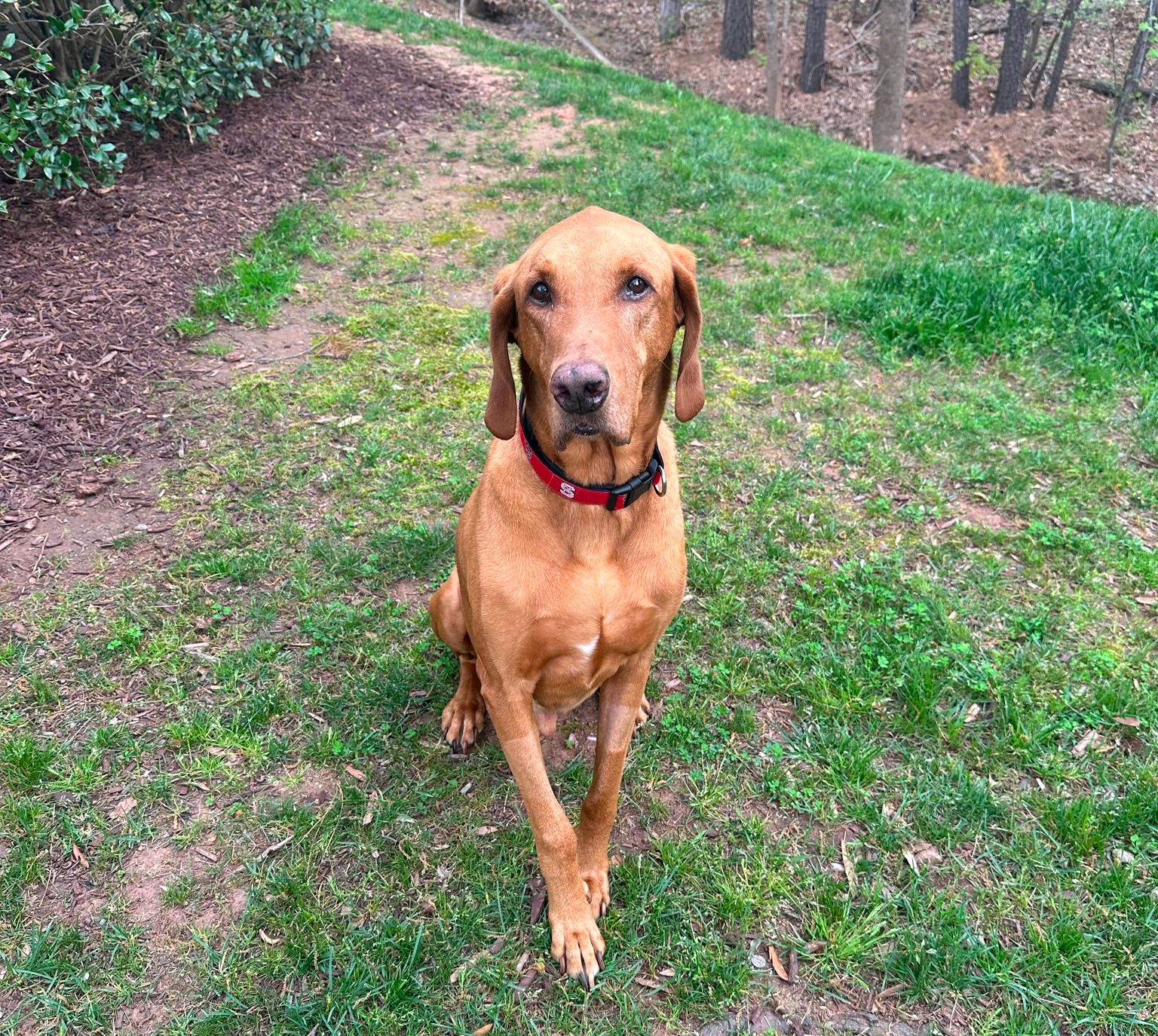
Today on Tripawd Talk Radio Episode #119, you will meet this miracle boy whose leg was saved by cementoplasty, a new limb sparing procedure now being offered in the United States.
On our show is Colt’s mom Hayley, and the first vet to perform cementoplasty in the United States. Tune in to learn how he is doing four months after the procedure.
Tripawd Talk Radio Episode #119: Colt’s Limb Sparing Cementoplasty Success Story
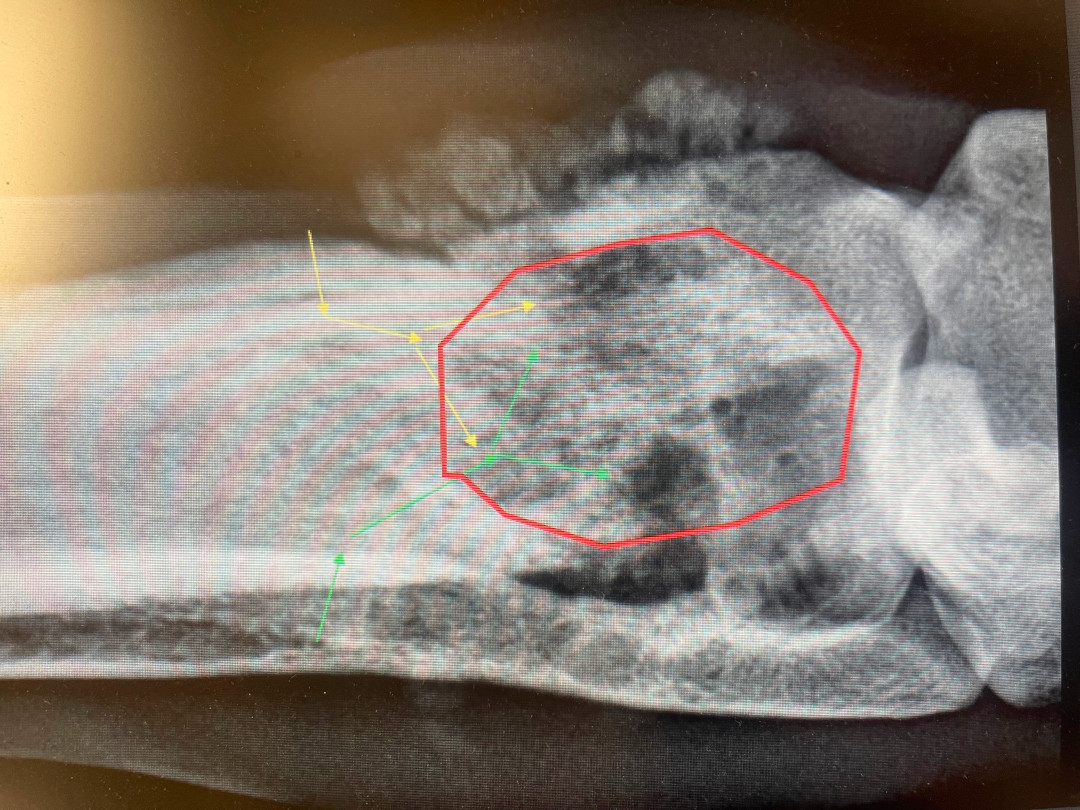
If you missed Tripawd Talk Episode #108, give it a listen first. That’s where you’ll learn all the details about a new product by TheraVet called BIOCERA-VET®. Their product can be a palliative limb spare option for some dogs with osteosarcoma.
Cementoplasty is the next generation bone substitute procedure from BioceraVet, a promising alternative to amputation and traditional limb sparing techniques for dogs diagnosed with bone cancer.
Canine Cancer Hero Colt Gets First Cementoplasty Procedure in the U.S.
Today we’re talking with Dr. Shaina Stewart Soule of PetSound Animal Hospital in North Carolina. She was the first vet in the United States to perform the Cementoplasty procedure. And, Colt’s Mom Hayley also joins us to talk about how well he’s doing four months later.
Subscribe to Tripawd Talk Radio in your podcast player app!
Watch the Tripawd Talk Cementoplasty Limb Sparing Interview on YouTube
A transcript follows this video
CEMENTOPLASTY RESOURCES
Cementoplasty for Osteosarcoma Dogs and Cats Tripawd Talk Radio Episode #108
Biocera-Vet Palliative Osteosarcoma Therapy
Dr. Shaina Stewart Soule, PetSound Animal Hospital, Cary, NC
Transcript: Tripawd Talk Radio Episode #119
Colt’s Limb Sparing Cementoplasty Success Story
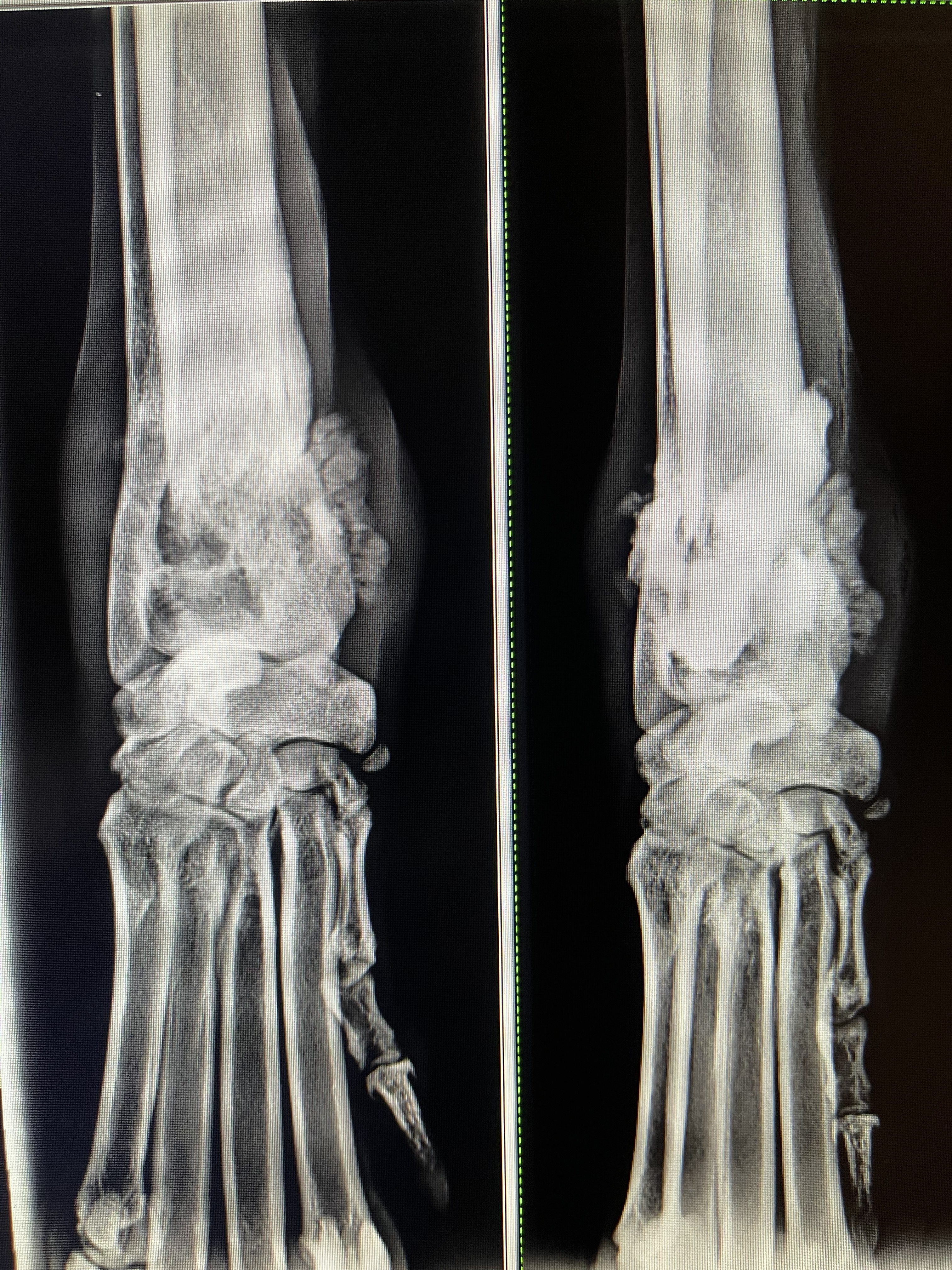
TRIPAWDS: Hello and welcome back to Tripawd Talk Radio. This is Episode #119. And we have an exciting follow-up to our discussion about cementoplasty, a promising alternative to amputation and traditional limb-sparing techniques for dogs diagnosed with bone cancer. You can learn all about cementoplasty from BioceraVet in Episode #108.
Today, we are talking with Dr. Shaina Stewart who was the first vet in the United States to perform the cementoplasty procedure and Colt’s mom, Hayley, joins us to talk about how well he is doing four months later. Thank you both for joining us.
Hayley: Thank you for having us.
Tripawds: Hi, Hayley. Hi, Dr. Stewart. We are so excited to have you here. We have been so hopeful about cementoplasty after talking with TheraVet that we just – we are so excited that we finally get to talk to you, a real-life pet parent who has been through this and a vet so that we can introduce this to more people in the tripawds community.
We are a support community for amputees but we are also all about saving the leg if possible. And it really sounds like this is possible and as everybody will find out in just a bit, Colt is a living example of that.
Tell us a little bit about Colt and a little background on his diagnosis.
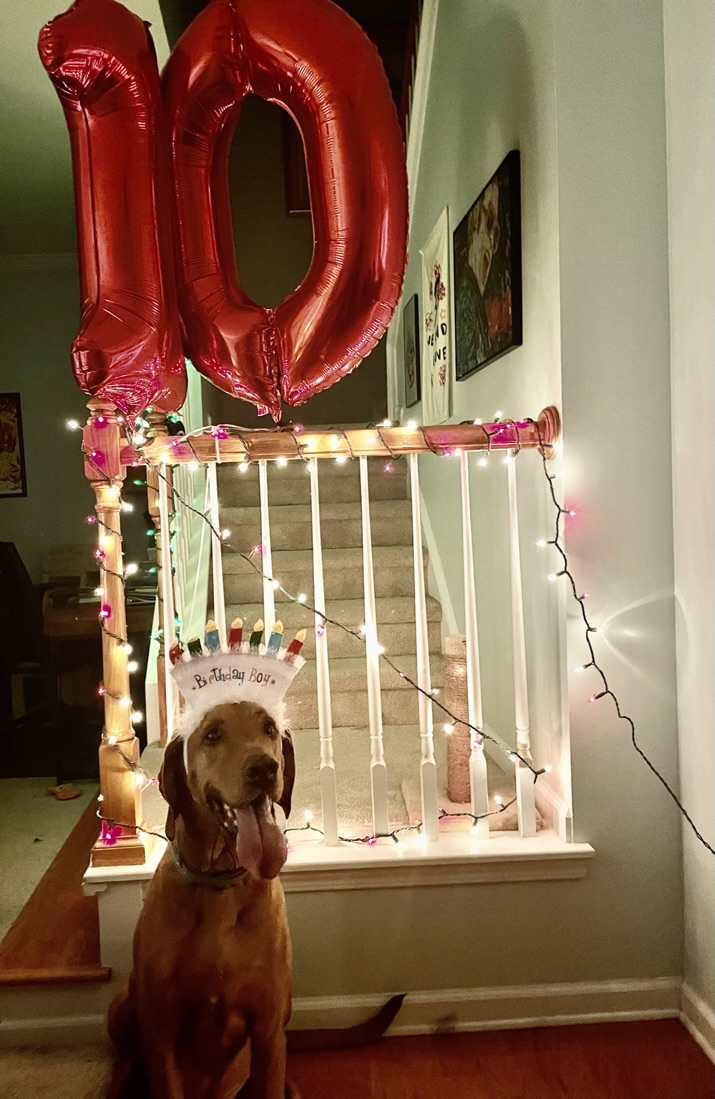
Hayley: So Colt is a 10-year-old Lab mix. I’ve had him his whole life. My parents have his mom. So, I noticed he was limping on and off probably starting September, October, but he only seemed to do it when I had to leave him at my parents over the weekend. So I wasn’t really too worried about it at first because it seemed like a way to not get – for me to not leave him.
Hayley: And then it just – it became more consistent and he turned 10 in November and he wasn’t really like acting funny. He just had the limp and he so large and lanky that I was just like, he is 10, he is a senior dog, he is big, maybe he just tweaked it. And I even got him like a little doggy ankle brace, and that just ended up pushing all the swelling to his paw. And so I was like at that point, I was like, OK, something is not right.
I took him to the vet at Petco and they did x-rays and she immediately came back saying that it didn’t look great and that it was most likely cancer, the osteosarcoma. And of course, I was like freaking out because I’m like, “If only I had taken him to the vet sooner, I could have caught this sooner.” Because she was like, “We have to amputate and even with the amputation, it’s still only 3 to 5 months.” And I’m like, “I don’t know what to do. This is not what I was expecting at all.”
My mom contacted someone that goes to our church that goes to see Dr. Stewart at PetSound. And so, we got an appointment with her to set up just a second opinion because especially with a cancer diagnosis, whether it would be an animal or humans, you never want to just immediately go with that first visit.
And Dr. Stewart suggested the cementoplasty and I was like, honestly, anything to save the leg because even if he would lived past the three months, like I said, he is so large and it was his front leg, I just wasn’t sure the quality of life it was going to give him and I wanted to try to give him the best chance.
Tripawds: And when you say large, how large are we talking about?
Hayley: He – well, in this whole process, he had lost some weight. So right now, he is probably about 93, 94. I think last time at his last chemotherapy appointment, he was about yeah, 93, 94. But he comes up, I’m 5’4 and he probably comes up to about my waist.
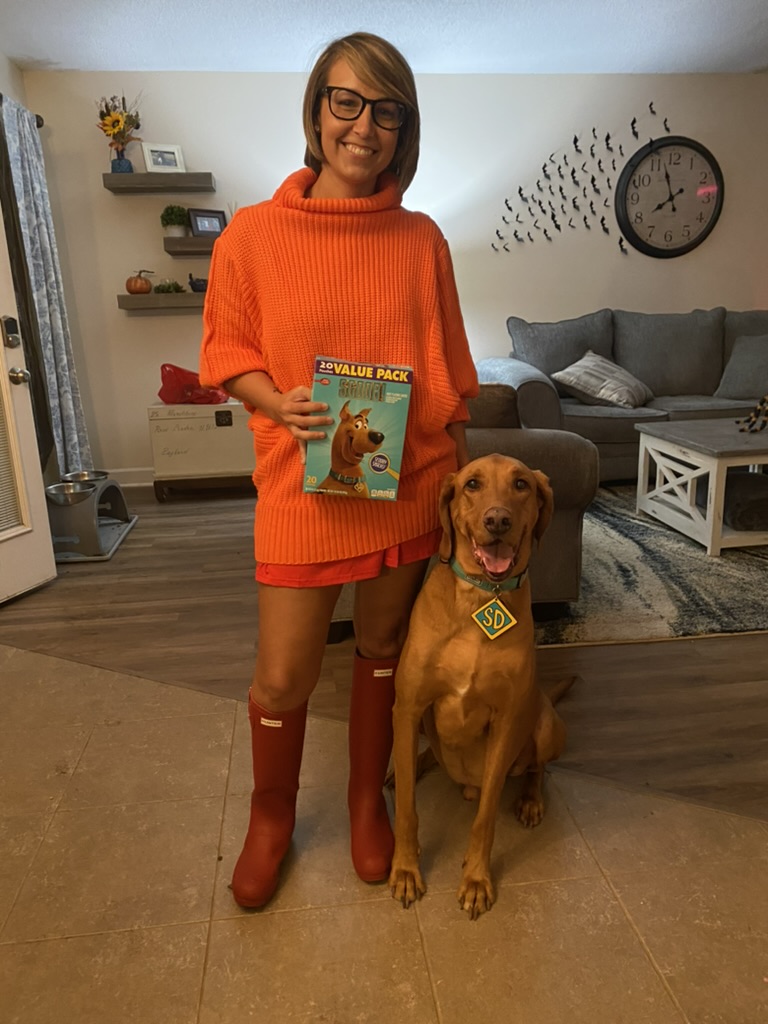
Tripawds: You mentioned saving the leg. Dr. Stewart. Cementoplasty in a nutshell is an alternative to amputation?
Dr. Shaina Stewart: It is. Prior, there were other limb-sparing things that could be done, but they were pretty aggressive and the success rate wasn’t that great and it was vastly more extensive than an amputation. And a friend of mine is a PA at Stein and radiology and there you just bone cement in humans with lytic lesions or osteoporosis and we had just been chatting and I was like, “Let me just see what’s out there in the vet med world these days.” And I had just looked into that and got in touched with TheraVet with Biocera bone cement a handful of days before Colt came along, so everything kind of fell into place.
I was able to get the product in and get x-rays of Colt and sent them to Dr. Chevalier at Biocera and he helped me with the game plan because you do have to be careful not to disturb the tumor. You want to go through a healthy bone and Colt was a little scary because he looked like he was about to have a pathologic fracture. And everything – we injected everything and the next morning, he stood up and was like, “Hey, guys! I’m going to walk around now.” And I was like, “Oh my gosh!”
It was a bit of a surprise for me just not having used the product before. Of course, I trusted everything, everyone, all the information I had gotten ahead of time. But it was really cool to see it in action.
Tripawds: It’s my understanding that you are the first vet in the US to try this?
Dr. Shaina Stewart: Yes. As a matter of fact, at the time, I did not know that. But after the fact, when I talked to Dr. Chevalier he said, “Congratulations on being the first vet.” And I said, “Oh, OK. Thanks for your guidance, guys.”
Tripawds: That is so exciting. And just to give you tons of accolades and credit for thinking the way you did because a lot of times, a vet will either rule out a dog from amputation because of their size or age or they just – we don’t hear a lot of vets – about a lot of vets looking into alternatives like this. So, it’s super, super exciting that you were able to do that and actually make this happen.
Now, Hayley, what did you think about all of this when you found that it was kind of still experimental in animals? What were your thoughts?
Hayley: Well, at the time, I don’t think we knew that we were – that Dr. Stewart and Colt were the first ones in the US. We knew it was still very new, but I – my favorite quote is one of those that like, “Dogs are a part of our lives, but we are their whole life.” Well, with any animal really. And so, I was down to try anything if it meant – because especially and I’m sure Dr. Stewart can attest to this, like yes, he is 10 but he does not look or act like a 10-year-old dog.
Dr. Shaina Stewart: No, not at all.
Hayley: And if he had, I probably wouldn’t have been so quick to try anything and everything. But I just wanted to give him a chance to live a little longer with a better quality of life than I think he would have had with amputation.
Tripawds: What was the recovery like? Was it what you had hoped for? Were there any challenges?
Hayley: I didn’t know what to be prepared for. But the next – when I took him home from surgery initially, the next day, his limp, while he still had from soTripawdsss and surgery, it was significantly better. And within a week, it was practically gone and he just – his – I never thought his energy level was down, but after surgery, I can tell such a difference and I was like, “Oh!” He really was a lot more tame like he didn’t have a lot of energy and I didn’t realize it because he is such – he is a lazy dog to begin with. He only exerts energy when he absolutely wants to.
So the fact that I noticed that difference, I was like, “Oh! He actually really was in pain.” And this has – it’s gone now. It was crazy.
Tripawds: Dr. Stewart, were there any kind of risks other than like you said, he might have a fracture at some point? Was there anything going into the surgery that would have excluded him from this?
Dr. Shaina Stewart: The biggest concern is you want to approach things through a healthy bone. So, the less healthy bone you have reasonably close by, the more worry you get because you’re drilling into healthy bone with a few centimeters and then really lytic tumor.
Another concern is if it’s near a joint which these tumors often are, if the tumor is really lytic and you start to inject and it leaks into joint, that product hardens quickly, which is why it’s useful but also if your goal – if it starts to leak into a joint, there is not much turning back other than to stop where you are. So those are things to be cautious of.
And like I said, with minimal experience, I did all the planning I could and hope for the best and I think the agreement was if this doesn’t go well, we can still amputate but hey, let’s try first.
Tripawds: And how long ago was the procedure?
Hayley: Let’s see. It will be four months tomorrow.
Tripawds: Wow! And Hayley, how’s he doing? Still …
Hayley: He is great. I sent Dr. Stewart and I sent you guys too. I took him – the weather has been really nice in North Carolina so I took him to the dog park in my apartment complex and we were throwing a tennis ball and it’s like night and day. It’s crazy. He is just back to normal like it never happened.
Tripawds: Dr. Stewart, I understand it’s like “palliative procedure” and this will prevent – does it prevent further bone deterioration? I presume the tumor still grows, right?
Dr. Shaina Stewart: It does. So it really varies dog to dog on if they’re going to at some point need a second injection as tumor spreads. We’ve done two more since that have been a proximal humerus so up by the shoulder and we have seen those – the results aren’t as great because as that tumor expands, the tumor itself, the proliferative part, there is so much soft tissue there and there’s just no place for it to go without impinging on things. So that’s one thing I would say is some locations are better candidates than other locations.
And that said, cancer does what it wants. So that’s one of my rules. And so, it’s hard to predict, will one injection lasts? And the product does help new bone formation, so I do have some radio ref of Colt that kind of show things filling in around the product. So that’s another positive is if there’s any healthy bone near that product, it helps build things that way.
And another aspect that I had found and mentioned to the folks at Biocera, I ran across a paper about surgery accelerated metastasis with osteosarcoma. Meaning, when you take away that primary tumor, all the little tumor cells in circulation don’t have a home to return to so they start looking for a new home, which is typically the lungs.
We are still working on – we don’t have nearly enough information on that related to this product, but I’m hopeful that that will be another very helpful aspect. They can keep their leg and have the added benefit of potentially slowing metastasis.
Tripawds: Speaking of slowing tumor growth, is Colt currently getting any other treatments, radiation or chemotherapy to slow or prevent tumor growth?
Dr. Shaina Stewart: He is all finished with his chemo. We did four rounds of carboplatin. And with this product, you don’t have to wait two weeks before you start chemotherapy. So he finished 13 weeks after his procedure with four rounds of carboplatin. You can combine it with radiation or radiation alone is helpful with pain. So that would be an option. Just radiation without pet insurance starts to get cost prohibitive quickly because you are looking at $6,000, $7,000, $8,000 in a hurry.
Tripawds: Yeah. Yeah. Definitely. And speaking of cost and I’m sure a lot of people are wondering, how does the cost of this procedure compare with an amputation or – well, we just talked about radiation therapy and I know that is probably the high-end of things. So where does this procedure fall in with those other?
Dr. Shaina Stewart: Here, it’s about the same as an amputation. But by the time we purchase the product and – so the surgery is less invasive and a little more quick, but I think that’s what evens out the amputation is the product itself. So I would say they are comparable.
Tripawds: Good to know. And then of course there is the long-term result and that a dog who gets to keep all four legs doesn’t have the same compensatory issues that a three-legged dog has.
So you’re not looking at the same type of rehab therapy expenses and things like that. This could actually be less expensive than an amputation is in the long run, don’t you think?
Dr. Shaina Stewart: Yeah, I definitely agree because a lot of my amputees in the past have – needed help from harnesses and ramps and potentially wheelchairs. And by the time you have all of those devices and rehab mobility, you are definitely way more financially invested than just having this procedure.
Tripawds: Hayley, what are your hopes for the future? How are you caring for him now? Do you think that will change?
Hayley: Like I said, everything is just like back to normal. He probably gets more toys and treats now than he used to just because like you’re a cancer survivor. And I know my dad is definitely – when I take him over there, him and the other dogs could all do the same thing and Colt is not going to get in trouble because he had to have surgery and he had had chemo. He can get away with anything right now.
Hayley: I could not imagine having to continue to do rehab with him and just like financially, this was definitely much better option and he just – he seems to do – and then he didn’t mind going to the vet for chemo. I dropped him off. He went back there. I was like, “OK. I will be back later.” So it was …
Dr. Shaina Stewart: By the end of it, we were all buddies I think.
Hayley: Yeah. [Laughs] He knew exactly where we were going every – once a month. He knew we were going to the vet.
Tripawds: It just sounds like just a perfect scenario and we hope that more people out there can get to do this because it is, it’s a game-changer and we are all about saving that leg if at all possible. So we can’t thank you two enough for being the ones to get this started out here in the US.
Tripawds: And we are particularly excited about finding out how the cementoplasty procedure may help prevent secondary tumor growth and slow that. So we look forward to this being done more and more and following up on Colt’s progress.
Hayley: Yes. Thank you so much for all you guys do. Anytime I can share this story, I do. So I’m like, Colt is a star. He is a medical miracle in my opinion.
Tripawds: He is indeed and we are going to share the story for sure. So thank you both for getting it out there.
Hayley: Thank you so much.
Tripawds: Congratulations to Dr. Stewart for doing the first cementoplasty procedure in the United States. We look forward to hearing how Colt keeps loving life on four legs.
Thank you for tuning in. Subscribe to Tripawd Talk Radio for more pet amputation tips from experts and claim your free gift just for listeners at Downloads.Tripawds.com/Podcast.
[End of transcript]
 Join the forum discussion on this topic!
Join the forum discussion on this topic!